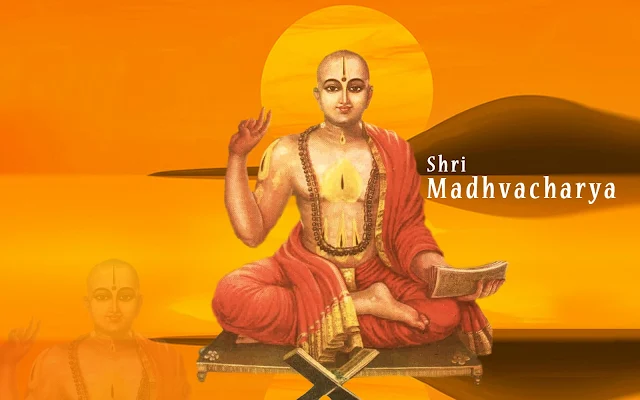Hanumanh Jayanti or Hanumath Jayanti is celebrated to commemorate the birth of Hanuman, the Vanara god, widely venerated throughout India. The event is celebrated on the 15th day of the Shukla Paksha, during the month of Chaitra (the Chaitra Pournimaa).
Hanuman is an ardent devotee of Lord Rama and is worshipped for his unflinching devotion to that god. From early morning, devotees flock Hanuman temples to worship him.
Hanuman Jayanti is an important festival of Hindus. Hanuman is the symbol of strength and energy. Hanuman is said to be able to assume any form at will, wield rocks, move mountains, dart through the air, seize the clouds and rival Garuda in swiftness of flight. He is worshipped as a deity with magical powers and the ability to conquer evil spirits.
The devotees visit temples and apply tilaka of sindoor to their foreheads from Hanuman's idol as Hanuman himself was of that color. A few thousand years before Ramayan time (in the latter part of Tretayuga – 2 million years ago), several divine souls came to Earth and modified the bodies of ape like creatures through evolutionary methods (genetic mutation) so that the animals could play the role of vehicles for these divine souls. That's how the Vanara race with reddish orange color (hues of deep orange and light red) was established before the Ramayan. In South India, especially Tamil Nadu Hanumaan jayanthi is celebrated on the Margazhi month of Moola nakshathram. It is said that Hanumaan was born on the moola nakshathra in Marghazi month.
Hanuman Jayanti in Telangana and Andhra Pradesh is on May 31, 2016. Hanuman Jayanthi is celebrated for 41-days which starts on Chaitra Purnima and ends on the tenth day during Krishna Paksha in Vaishakha month. In Telangana and Andhra Pradesh devotees begin 41-days Deeksha on Chaitra Purnima and conclude it on Hanuman Jayanthi day (May 31, 2016).
In Maharashtra, Hanuman Jayanti is celebrated on the full moon day (pūrnima) of the Hindu lunar month of Chaitra. A special feature of Hanuman Jayanti is that according to some religious almanacs (panchāngs) the birthday of Hanuman falls on the fourteenth day (chaturdashi) in the dark fortnight of the month of Ashvin while according to others it falls on the full moon day in the bright fortnight of Chaitra. On this day, in a Hanuman temple spiritual discourses are started at dawn. Hanuman was born at sunrise. At that time the spiritual discourse is stopped and the offering of food (Prasad) is distributed to everyone.
Spiritual discourses are organised in most of the Hindu temples on this day. Hanuman was the most powerful in the three people the Heaven people, the Hell people, and the Land people. All these Gods had blessed him when he was just a 1/2-year-old child.
Hanuman is an ardent devotee of Lord Rama and is worshipped for his unflinching devotion to that god. From early morning, devotees flock Hanuman temples to worship him.
Hanuman Jayanti is an important festival of Hindus. Hanuman is the symbol of strength and energy. Hanuman is said to be able to assume any form at will, wield rocks, move mountains, dart through the air, seize the clouds and rival Garuda in swiftness of flight. He is worshipped as a deity with magical powers and the ability to conquer evil spirits.
The devotees visit temples and apply tilaka of sindoor to their foreheads from Hanuman's idol as Hanuman himself was of that color. A few thousand years before Ramayan time (in the latter part of Tretayuga – 2 million years ago), several divine souls came to Earth and modified the bodies of ape like creatures through evolutionary methods (genetic mutation) so that the animals could play the role of vehicles for these divine souls. That's how the Vanara race with reddish orange color (hues of deep orange and light red) was established before the Ramayan. In South India, especially Tamil Nadu Hanumaan jayanthi is celebrated on the Margazhi month of Moola nakshathram. It is said that Hanumaan was born on the moola nakshathra in Marghazi month.
Hanuman Jayanti in Telangana and Andhra Pradesh is on May 31, 2016. Hanuman Jayanthi is celebrated for 41-days which starts on Chaitra Purnima and ends on the tenth day during Krishna Paksha in Vaishakha month. In Telangana and Andhra Pradesh devotees begin 41-days Deeksha on Chaitra Purnima and conclude it on Hanuman Jayanthi day (May 31, 2016).
In Maharashtra, Hanuman Jayanti is celebrated on the full moon day (pūrnima) of the Hindu lunar month of Chaitra. A special feature of Hanuman Jayanti is that according to some religious almanacs (panchāngs) the birthday of Hanuman falls on the fourteenth day (chaturdashi) in the dark fortnight of the month of Ashvin while according to others it falls on the full moon day in the bright fortnight of Chaitra. On this day, in a Hanuman temple spiritual discourses are started at dawn. Hanuman was born at sunrise. At that time the spiritual discourse is stopped and the offering of food (Prasad) is distributed to everyone.
Spiritual discourses are organised in most of the Hindu temples on this day. Hanuman was the most powerful in the three people the Heaven people, the Hell people, and the Land people. All these Gods had blessed him when he was just a 1/2-year-old child.
















